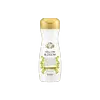What's inside
What's inside
 Key Ingredients
Key Ingredients

 Benefits
Benefits

 Concerns
Concerns

 Ingredients Side-by-side
Ingredients Side-by-side

Minoxidil 2%
Alcohol
AntimicrobialPropylene Glycol
HumectantWater
Skin ConditioningCocamidopropyl Betaine
CleansingLauric Acid
CleansingDecyl Glucoside
CleansingParfum
MaskingSodium Chloride
MaskingDisodium Cocoamphodiacetate
CleansingGlycerin
HumectantGlycol Distearate
EmollientPotassium Hydroxide
BufferingGuar Hydroxypropyltrimonium Chloride
Skin ConditioningPEG-120 Methyl Glucose Dioleate
EmulsifyingXylitol
HumectantLactitol
HumectantGlyceryl Oleate
EmollientCoco-Glucoside
CleansingPolyquaternium-67
Laureth-4
EmulsifyingChlorphenesin
AntimicrobialCitric Acid
BufferingLactic Acid
BufferingSodium Acetate
BufferingSerenoa Serrulata Fruit Extract
Skin ConditioningLinalool
PerfumingIsopropyl Alcohol
SolventPhenoxyethanol
PreservativeTocopherol
AntioxidantBenzoic Acid
MaskingDehydroacetic Acid
PreservativeHydrogenated Palm Glycerides Citrate
EmollientLecithin
EmollientAscorbyl Palmitate
AntioxidantMinoxidil 2%, Alcohol, Propylene Glycol, Water, Cocamidopropyl Betaine, Lauric Acid, Decyl Glucoside, Parfum, Sodium Chloride, Disodium Cocoamphodiacetate, Glycerin, Glycol Distearate, Potassium Hydroxide, Guar Hydroxypropyltrimonium Chloride, PEG-120 Methyl Glucose Dioleate, Xylitol, Lactitol, Glyceryl Oleate, Coco-Glucoside, Polyquaternium-67, Laureth-4, Chlorphenesin, Citric Acid, Lactic Acid, Sodium Acetate, Serenoa Serrulata Fruit Extract, Linalool, Isopropyl Alcohol, Phenoxyethanol, Tocopherol, Benzoic Acid, Dehydroacetic Acid, Hydrogenated Palm Glycerides Citrate, Lecithin, Ascorbyl Palmitate
Water
Skin ConditioningCyclopentasiloxane
EmollientCetyl Alcohol
EmollientStearyl Alcohol
EmollientStearamidopropyl Dimethylamine
EmulsifyingParfum
MaskingBrassica Napus Seed Oil
EmollientGlutamic Acid
HumectantDimethicone
EmollientPersea Gratissima Oil
Skin ConditioningPanax Ginseng Root Extract
EmollientPhenoxyethanol
PreservativeHouttuynia Cordata Extract
Skin ConditioningSalicylic Acid
MaskingPanthenol
Skin ConditioningAmodimethicone
Niacinamide
SmoothingGanoderma Lucidum Extract
Skin ProtectingButylene Glycol
HumectantGinkgo Biloba Leaf Extract
Skin ConditioningDisodium EDTA
Tocopheryl Acetate
AntioxidantCetrimonium Chloride
AntimicrobialCyclotetrasiloxane
EmollientLavandula Angustifolia Flower Water
Skin ConditioningHydrolyzed Keratin
HumectantTrideceth-12
EmulsifyingCitrus Paradisi Fruit Extract
Skin ConditioningPinus Sylvestris Cone Extract
MaskingCitrus Limon Fruit Extract
MaskingArtemisia Vulgaris Extract
Skin ConditioningAlcohol
AntimicrobialPyrus Malus Fruit Extract
Skin ConditioningAloe Barbadensis Leaf Extract
EmollientCoix Lacryma-Jobi Ma-Yuen Seed Extract
Skin ConditioningCalendula Officinalis Extract
Skin ConditioningRosmarinus Officinalis Extract
AntimicrobialSalvia Officinalis Extract
AntimicrobialWater, Cyclopentasiloxane, Cetyl Alcohol, Stearyl Alcohol, Stearamidopropyl Dimethylamine, Parfum, Brassica Napus Seed Oil, Glutamic Acid, Dimethicone, Persea Gratissima Oil, Panax Ginseng Root Extract, Phenoxyethanol, Houttuynia Cordata Extract, Salicylic Acid, Panthenol, Amodimethicone, Niacinamide, Ganoderma Lucidum Extract, Butylene Glycol, Ginkgo Biloba Leaf Extract, Disodium EDTA, Tocopheryl Acetate, Cetrimonium Chloride, Cyclotetrasiloxane, Lavandula Angustifolia Flower Water, Hydrolyzed Keratin, Trideceth-12, Citrus Paradisi Fruit Extract, Pinus Sylvestris Cone Extract, Citrus Limon Fruit Extract, Artemisia Vulgaris Extract, Alcohol, Pyrus Malus Fruit Extract, Aloe Barbadensis Leaf Extract, Coix Lacryma-Jobi Ma-Yuen Seed Extract, Calendula Officinalis Extract, Rosmarinus Officinalis Extract, Salvia Officinalis Extract
Ingredients Explained
These ingredients are found in both products.
Ingredients higher up in an ingredient list are typically present in a larger amount.
Alcohol comes in many different forms. Different types of alcohol will have different effects on skin. This ingredient is usually an astringent alcohol.
These alcohols are drying on the skin. They may strip away your skin's natural oils and even damage your skin barrier. Astringent alcohols may also irritate skin.
Other types of astringent alcohols include:
According to the National Rosacea Society based in the US, you should be mindful of products with these alcohols in the top half of ingredients.
Any type of sanitizing product will have high amounts of alcohol to help kill bacteria and viruses.
Fatty alcohols come from plant oils such as coconut oil. These can help hydrate the skin and are non-irritating. Some fatty alcohols include cetyl and stearyl alcohol.
Learn more about AlcoholParfum is a catch-all term for an ingredient or more that is used to give a scent to products.
Also called "fragrance", this ingredient can be a blend of hundreds of chemicals or plant oils. This means every product with "fragrance" or "parfum" in the ingredients list is a different mixture.
For instance, Habanolide is a proprietary trade name for a specific aroma chemical. When used as a fragrance ingredient in cosmetics, most aroma chemicals fall under the broad labeling category of “FRAGRANCE” or “PARFUM” according to EU and US regulations.
The term 'parfum' or 'fragrance' is not regulated in many countries. In many cases, it is up to the brand to define this term.
For instance, many brands choose to label themselves as "fragrance-free" because they are not using synthetic fragrances. However, their products may still contain ingredients such as essential oils that are considered a fragrance by INCI standards.
One example is Calendula flower extract. Calendula is an essential oil that still imparts a scent or 'fragrance'.
Depending on the blend, the ingredients in the mixture can cause allergies and sensitivities on the skin. Some ingredients that are known EU allergens include linalool and citronellol.
Parfum can also be used to mask or cover an unpleasant scent.
The bottom line is: not all fragrances/parfum/ingredients are created equally. If you are worried about fragrances, we recommend taking a closer look at an ingredient. And of course, we always recommend speaking with a professional.
Learn more about ParfumPhenoxyethanol is a preservative that has germicide, antimicrobial, and aromatic properties. Studies show that phenoxyethanol can prevent microbial growth. By itself, it has a scent that is similar to that of a rose.
It's often used in formulations along with Caprylyl Glycol to preserve the shelf life of products.
Water. It's the most common cosmetic ingredient of all. You'll usually see it at the top of ingredient lists, meaning that it makes up the largest part of the product.
So why is it so popular? Water most often acts as a solvent - this means that it helps dissolve other ingredients into the formulation.
You'll also recognize water as that liquid we all need to stay alive. If you see this, drink a glass of water. Stay hydrated!
Learn more about Water